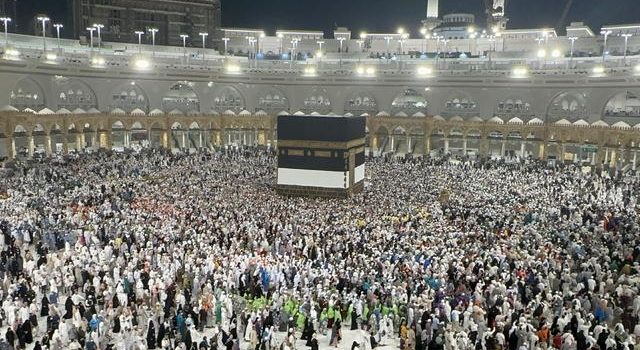
Introduction
The annual Hajj pilgrimage to Mecca, one of the most sacred rituals in Islam, was marred by tragedy on September 24, 2015, when a deadly stampede claimed the lives of more than 1,300 pilgrims. The incident occurred amidst scorching heat, dehydration, and overcrowding, leaving authorities reeling and the Muslim world in mourning.
The Incident
The stampede took place during the ritual of “stoning the devil,” in which pilgrims throw pebbles at three pillars representing Satan. At approximately 9:00 AM local time, a surge of pilgrims converged on a crowded intersection near the Jamarat Bridge, the main thoroughfare leading to the stoning area.
Witnesses described a scene of chaos and panic as thousands of pilgrims pushed and shoved against each other. Many fell to the ground, suffocating or being trampled to death. The intense heat and lack of ventilation further exacerbated the situation, leading to numerous heat-related illnesses.
Victims and Casualties
The death toll in the stampede exceeded 1,300, while hundreds more were injured. Pilgrims from over 130 countries were among the victims, including citizens from Iran, Pakistan, Nigeria, India, Egypt, and Tanzania.
The majority of the victims were elderly, frail, or disabled. The high temperatures and lack of shade made it particularly hazardous for these vulnerable individuals.
Causes of the Stampede
Initial investigations revealed several factors that contributed to the stampede:
- Overcrowding: The stoning area had a limited capacity, and authorities had failed to adequately control the flow of pilgrims.
- Extreme Heat: The temperature at the time of the stampede was approximately 46 degrees Celsius (114 degrees Fahrenheit), creating unbearable conditions.
- Inadequate Ventilation: The area lacked sufficient airflow, causing pilgrims to overheat and faint.
- Lack of Emergency Response: Authorities were slow to respond to the emergency, further exacerbating the situation.

Government Response
The Saudi government immediately condemned the incident and declared a day of national mourning. King Salman bin Abdulaziz formed a high-level committee to investigate the causes of the stampede and prevent similar tragedies in the future.
The government also provided medical assistance to the injured and offered condolences to the families of the victims.
International Reactions
The international community expressed shock and sadness over the tragedy. Condolences poured in from world leaders, religious figures, and international organizations.
The United Nations expressed concern about the increasing number of deaths during the Hajj pilgrimage and called for urgent action to improve safety.
Lessons Learned
The tragedy at Mecca highlighted the need for comprehensive safety measures during the Hajj pilgrimage. Authorities vowed to implement the following reforms:
- Enhanced Crowd Control: Implementing stricter crowd management systems to prevent overcrowding and reduce pressure points.
- Improved Ventilation: Installing air conditioning and ventilation systems in crowded areas to mitigate heat exposure.
- Increased Medical Support: Deploying more medical personnel and establishing field hospitals to provide timely assistance to pilgrims.
- Improved Coordination: Enhancing communication and coordination between various agencies responsible for managing the Hajj.
- Education and Awareness: Educating pilgrims about safety protocols and the risks associated with extreme heat.
Aftermath
The tragedy in Mecca had a profound impact on the Muslim world. Pilgrims expressed concerns about the safety of the Hajj pilgrimage and demanded accountability from authorities.
The Saudi government faced international pressure to improve safety measures and prevent similar incidents in the future.
The tragedy also sparked a broader discussion about the challenges and responsibilities associated with managing large religious gatherings.
Safety Recommendations
In the aftermath of the stampede, experts recommended the following safety measures for the Hajj pilgrimage:
- Plan Ahead: Pilgrims should plan their pilgrimage carefully, choosing dates and times when crowds are expected to be smaller.
- Stay Hydrated: Drink plenty of fluids before, during, and after the pilgrimage, especially in hot weather.
- Wear Appropriate Clothing: Choose light-colored, loose-fitting clothing that allows for breathability.
- Stay Informed: Familiarize yourself with the safety protocols and guidelines issued by authorities.
- Be Aware of Your Surroundings: Pay attention to your surroundings and be mindful of others around you.
- Seek Assistance When Needed: Don’t hesitate to seek medical assistance or inform authorities if you feel unwell or overwhelmed.
Conclusion
The tragedy at Mecca was a devastating event that shook the Muslim world and highlighted the challenges of managing large religious gatherings. The incident underscores the importance of comprehensive safety measures, effective coordination, and improved communication between authorities and pilgrims.
As the Hajj pilgrimage continues to attract millions of people each year, it is crucial that lessons are learned from this tragedy and that necessary reforms are implemented to ensure the safety and well-being of all pilgrims.










